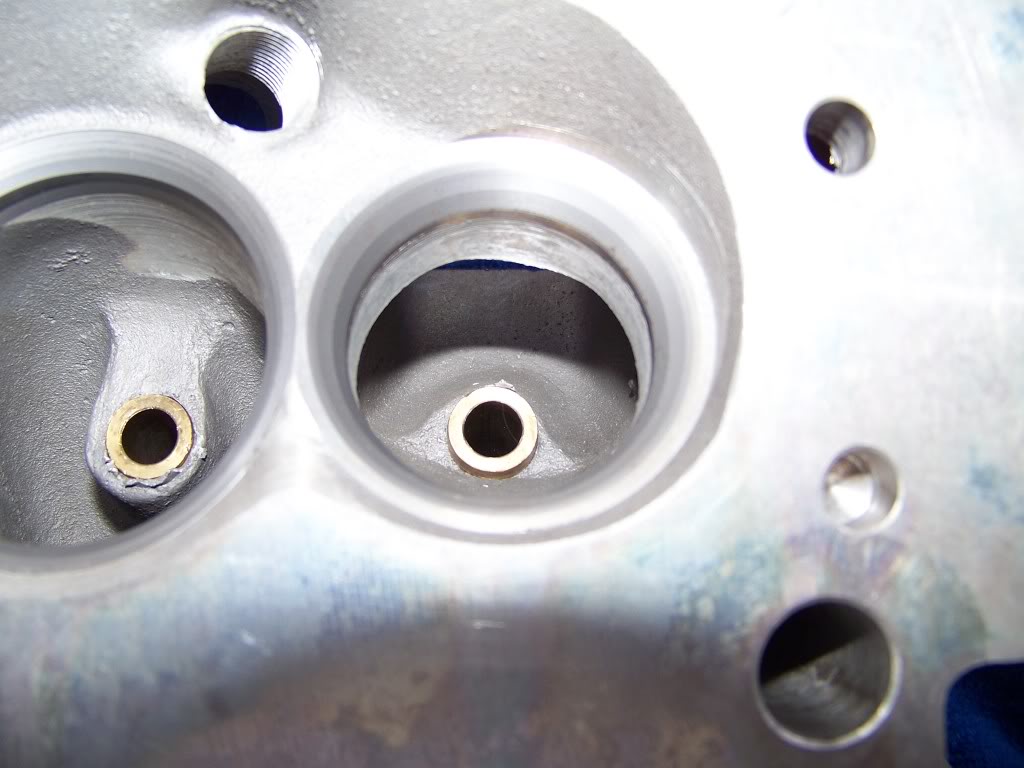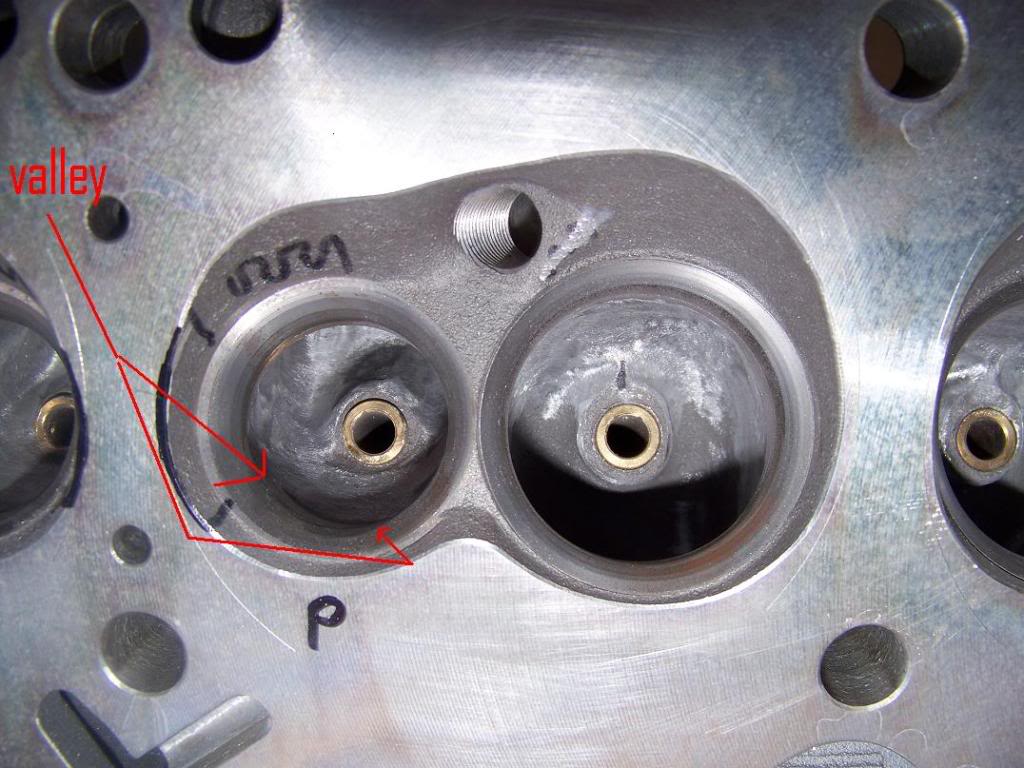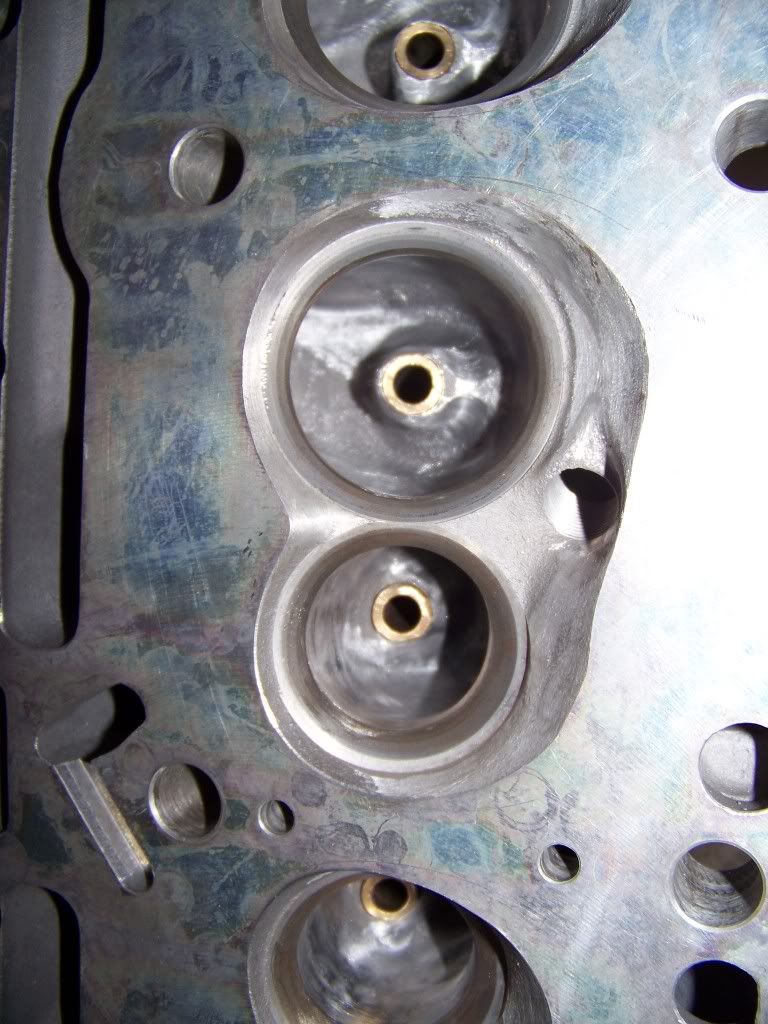Up and Coming
#21
If there is a computer chip that increases your engine efficiency by 20%, do you not think that the factory would be installing it as a sales tactic to attract customers? I know that the "chips" advance the timing of the engine and there is a benefit in certain ranges, but I think that chips' gains is referring to the smallest 1.2l engine on the market and applying that info to all engines.
In addition, altering the timing is not the most beneficial route to increasing the torque of a stock engine. The exhaust, dollar for dollar, is the best route for meaningful gains. Followed by the intake tract, then the camshaft timing (arguably the ignition strength).
My followup question:
Since your using your engine as a guinea pig for class..... what exactly are you trying to accomplish as far as gains? At what RPM? Compression? Fuel type? Octane rating?
These are simple questions on the surface, but without really looking at what the intent is, you cannot proceed realistically. I recommended the positive displacement based on what you mentioned as you primary goal. I could go so far as to recommend about 20 grand in custom alloy pistons and coated skirts for your block, but if your "learning" about engines, I would think your best and hardest lesson would be to blueprint the engine, before you start modifying it. After you begin to learn the factory specs and matching your components within a very strict tolereace, then you could start learning where the meaningful gains can be found and what changes when you modify a parameter. I promise you that it is harder to blueprint an engine than to modify it.
In addition, altering the timing is not the most beneficial route to increasing the torque of a stock engine. The exhaust, dollar for dollar, is the best route for meaningful gains. Followed by the intake tract, then the camshaft timing (arguably the ignition strength).
My followup question:
Since your using your engine as a guinea pig for class..... what exactly are you trying to accomplish as far as gains? At what RPM? Compression? Fuel type? Octane rating?
These are simple questions on the surface, but without really looking at what the intent is, you cannot proceed realistically. I recommended the positive displacement based on what you mentioned as you primary goal. I could go so far as to recommend about 20 grand in custom alloy pistons and coated skirts for your block, but if your "learning" about engines, I would think your best and hardest lesson would be to blueprint the engine, before you start modifying it. After you begin to learn the factory specs and matching your components within a very strict tolereace, then you could start learning where the meaningful gains can be found and what changes when you modify a parameter. I promise you that it is harder to blueprint an engine than to modify it.
Also, by altering the intake tract, would it help to remove the arm from the left side of the intake manifold (almost connects to the grille, near the radiator and fan) and put a cold intake on it instead?
And elaborate on camshaft timing? How would I go about altering that? Surely it can't be as simple as a new camshaft? And finally, I'd say I'm probably not at risk at having to raise the octane rating of my gasoline yet.
Last edited by 1988Dakota; 07-08-2011 at 10:43 PM.
#22
My truck wasn't taken care of very well  The guy I bought it off of was using Quaker state motor oil, and it ran like crap. It was getting 13 mpg or less. I feel pretty good about my gas mileage now lol. And 50 mpg is good, but not really eye popping for a honda, especially the older 1st, 2nd, 3rd gen & 5th gen VX's. This is my 3rd 50 mpg honda (I've had 8 of em). I'm well over 200k on the odometer too. No smoke and very little drink haha. The CRX's can pull 60 mpg, and I've had 2 civic wagons that pulled 40 or better. I know people with the toyota prius that don't get 50 mpg. Anyways....good times in anything I drive
The guy I bought it off of was using Quaker state motor oil, and it ran like crap. It was getting 13 mpg or less. I feel pretty good about my gas mileage now lol. And 50 mpg is good, but not really eye popping for a honda, especially the older 1st, 2nd, 3rd gen & 5th gen VX's. This is my 3rd 50 mpg honda (I've had 8 of em). I'm well over 200k on the odometer too. No smoke and very little drink haha. The CRX's can pull 60 mpg, and I've had 2 civic wagons that pulled 40 or better. I know people with the toyota prius that don't get 50 mpg. Anyways....good times in anything I drive 
 The guy I bought it off of was using Quaker state motor oil, and it ran like crap. It was getting 13 mpg or less. I feel pretty good about my gas mileage now lol. And 50 mpg is good, but not really eye popping for a honda, especially the older 1st, 2nd, 3rd gen & 5th gen VX's. This is my 3rd 50 mpg honda (I've had 8 of em). I'm well over 200k on the odometer too. No smoke and very little drink haha. The CRX's can pull 60 mpg, and I've had 2 civic wagons that pulled 40 or better. I know people with the toyota prius that don't get 50 mpg. Anyways....good times in anything I drive
The guy I bought it off of was using Quaker state motor oil, and it ran like crap. It was getting 13 mpg or less. I feel pretty good about my gas mileage now lol. And 50 mpg is good, but not really eye popping for a honda, especially the older 1st, 2nd, 3rd gen & 5th gen VX's. This is my 3rd 50 mpg honda (I've had 8 of em). I'm well over 200k on the odometer too. No smoke and very little drink haha. The CRX's can pull 60 mpg, and I've had 2 civic wagons that pulled 40 or better. I know people with the toyota prius that don't get 50 mpg. Anyways....good times in anything I drive
#23
Well being that I've yet to get an aftermarket RPM gauge (tachometer), I'm not sure where the RPM's are at any given time, but being that my lowly 3-speed automatic transmission redlines rather quickly, would it sound reasonable to wonder how much more HP I can push in the 2500-3000RPM range (I think the redline is in the 4400-4500 range on '88 models)?
Also, by altering the intake tract, would it help to remove the arm from the left side of the intake manifold (almost connects to the grille, near the radiator and fan) and put a cold intake on it instead?
And elaborate on camshaft timing? How would I go about altering that? Surely it can't be as simple as a new camshaft? And finally, I'd say I'm probably not at risk at having to raise the octane rating of my gasoline yet.
Also, by altering the intake tract, would it help to remove the arm from the left side of the intake manifold (almost connects to the grille, near the radiator and fan) and put a cold intake on it instead?
And elaborate on camshaft timing? How would I go about altering that? Surely it can't be as simple as a new camshaft? And finally, I'd say I'm probably not at risk at having to raise the octane rating of my gasoline yet.
Note that the base has been built (ie the factory engine), and you removing obstacles from its peak performance. If you wanted to get crazy and had the tools available, you could work the heads pretty far and fill with putty to augment the intake charge.
The head work should be similar to this:
From this

to this

This is not a picture of the finished guides, but it gives you the idea. DO NOT make a knifed edge behind the valve guide as it will cause negative turbulence. You could also offset your work to make the tract biased to impart twirl on the charge. This affects peak horsepower. If you tumble port, it will affect your peak torque.
I am fairly sure you have open chamber heads so you "could" mill them down to offset the compression loss from deshrouding. Smaller gaskets will have a similar effect. All in all, the factory heads are pretty sucky unless you hog out the bumps, casting slag, and rework the chamber. The chamber work WILL see the best benefit under .400 of valve height.
You can impart a slight cam timing adjustment by using a cam key that will advance or retard the cam timing up to about 5 degree's. You can also buy a new cam that will affect the lift, duration, and timing to your particular needs, but since you being fairly conservative, I would just recommend the new lifters.
Last edited by siggie30; 07-09-2011 at 12:32 PM.
#25
And here I thought I was being in the slightest bit demanding with the RPM range. I mean, I've been told that this truck just won't cut it, so I gave conservative expectations I suppose.
So suppose I turned it down a notch and wanted some pretty nice gains in the 1500-2000 mark?
So suppose I turned it down a notch and wanted some pretty nice gains in the 1500-2000 mark?
#26
And here I thought I was being in the slightest bit demanding with the RPM range. I mean, I've been told that this truck just won't cut it, so I gave conservative expectations I suppose.
So suppose I turned it down a notch and wanted some pretty nice gains in the 1500-2000 mark?
So suppose I turned it down a notch and wanted some pretty nice gains in the 1500-2000 mark?
Let's take a step back and reevaluate what your wanting to accomplish. Standard specs on a 3.9l engine, gasoline type, factory equipment would put the power band in the 1k-4k range. This is the typical range for street driving. If your ONLY wanting to increase torque, then your ONLY options are to increase the stroke, or minimize the losses.
Really, what do you really want? Redline for the stroke is around 6500 rpm (which is almost 3900 ft per sec) and about the limit for a cast crank.
If your wanting the extreme then look for a V6 Magnum core, 4" crank, low duration high lift cam, bigger TB (or convert to carb), headers, melling coated bearings, moly rings, lighter pistons, and balance the crank to within .01 gram. Aftermarket ignition, new water and oi pump, and the best heads you can find.
Heads=power, shortblock= durability, extra parts=tuneability
Last edited by siggie30; 07-09-2011 at 05:01 PM.
#27
Let's take a step back and reevaluate what your wanting to accomplish. Standard specs on a 3.9l engine, gasoline type, factory equipment would put the power band in the 1k-4k range. This is the typical range for street driving. If your ONLY wanting to increase torque, then your ONLY options are to increase the stroke, or minimize the losses.
Really, what do you really want? Redline for the stroke is around 6500 rpm (which is almost 3900 ft per sec) and about the limit for a cast crank.
Really, what do you really want? Redline for the stroke is around 6500 rpm (which is almost 3900 ft per sec) and about the limit for a cast crank.
Now that's not to say some top-end wouldn't be nice, but that's not necessary, and not really what I'm looking for. Think acceleration.
Last edited by 1988Dakota; 07-09-2011 at 05:06 PM.
#28
Just get some lower gears for your rear end. Most likely you got 3.55:1. If you go to 4.56:1 you will get a sick launch! But on freeway you will loose some MPG. I should of suggested this in the beginning. Cheep and you don't have to mess with the engine.
Check out ring and pinion sets at www.ringpinion.com
Check out this chart to see where you want your power band and your MPG.
http://www.omix-ada.com/gear-ratio-vs-tire-size.asp
Check out ring and pinion sets at www.ringpinion.com
Check out this chart to see where you want your power band and your MPG.
http://www.omix-ada.com/gear-ratio-vs-tire-size.asp
#29
x2. Mechanical advantage is definately the easiest way.

With that said, 0-60 almost has nothing to do with the output of an engine. You can confirm this by reviewing the drag slips of cars between 400 and 6000 torque. The 0-60 ft times are the chassis response to weight during acceleration in relation to the instant center. Some of the older cars (drag type) tend to "lift" at the start so as to "plant" the tires harder, while Detroit produces cars that squat on acceleration to trick you into thinking the wheels are coming up, although it actually is reducing the weight on the tires in the rear. It is important to understand that the relationship between power and acceleration is not linear when you add traction to the function. A higher gear, a four link triangulated rear (or slapper bars if your cheap), AA rated tires, and about 200 lbs over the rear axle should help you achieve a sub 2 second 60 ft time. The slapper bars will prevent your springs from "bending backward" by reducting the frequency that is imparted toward the front (where the acceleration power is transmitted).
You should go to your library and order some of the books that teach this in great detail, and use the university's tools to your advantage. Unless you have access to a machine shop and a lift, most people can only dream of applying these ideas to their chassis. There is maybe a handful of older dakota owners that have put four links in their trucks, and of them most put airbags to lower their rides. A four link will allow you to adjust your squat/ antisquat to conditions, tire type, and power with good results. Plus, there just frackin cool.
With that said, 0-60 almost has nothing to do with the output of an engine. You can confirm this by reviewing the drag slips of cars between 400 and 6000 torque. The 0-60 ft times are the chassis response to weight during acceleration in relation to the instant center. Some of the older cars (drag type) tend to "lift" at the start so as to "plant" the tires harder, while Detroit produces cars that squat on acceleration to trick you into thinking the wheels are coming up, although it actually is reducing the weight on the tires in the rear. It is important to understand that the relationship between power and acceleration is not linear when you add traction to the function. A higher gear, a four link triangulated rear (or slapper bars if your cheap), AA rated tires, and about 200 lbs over the rear axle should help you achieve a sub 2 second 60 ft time. The slapper bars will prevent your springs from "bending backward" by reducting the frequency that is imparted toward the front (where the acceleration power is transmitted).
You should go to your library and order some of the books that teach this in great detail, and use the university's tools to your advantage. Unless you have access to a machine shop and a lift, most people can only dream of applying these ideas to their chassis. There is maybe a handful of older dakota owners that have put four links in their trucks, and of them most put airbags to lower their rides. A four link will allow you to adjust your squat/ antisquat to conditions, tire type, and power with good results. Plus, there just frackin cool.
#30
Just get some lower gears for your rear end. Most likely you got 3.55:1. If you go to 4.56:1 you will get a sick launch! But on freeway you will loose some MPG. I should of suggested this in the beginning. Cheep and you don't have to mess with the engine.
Check out ring and pinion sets at www.ringpinion.com
Check out this chart to see where you want your power band and your MPG.
http://www.omix-ada.com/gear-ratio-vs-tire-size.asp
Check out ring and pinion sets at www.ringpinion.com
Check out this chart to see where you want your power band and your MPG.
http://www.omix-ada.com/gear-ratio-vs-tire-size.asp



